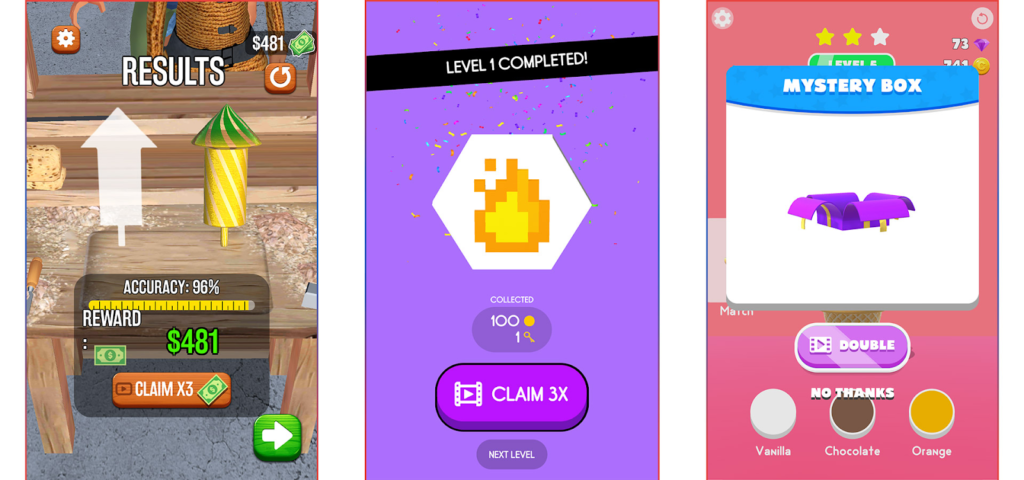
According to Appodeal’s quarterly mobile eCPM research, in-app advertisements are becoming a more important source of income for mobile apps as a result of recent changes in the ad-tech sector. Marketing and product managers must optimise their plans if they want to increase their ad monetization effectiveness. Ad waterfall adjustments, A/B testing ad setups, user segmentation, and revenue metric tracking, however, can take some time. Finding the ideal balance between monetization and retention is not an easy undertaking, which makes it even more crucial.
We at Appodeal help mobile developers like you launch and expand your apps and games. And today we want to provide you a few pointers on how to improve your ad monetization approach that we have picked up along the way.
Maintain high ad fill rates.
Increase ad volume without decreasing retention
To balance your in-app purchases, use rewarded adverts.
Segment your advertising based on your user base.
Align your UA initiatives with your ad monetization plan (Extra) How to match use and revenue data
1. Maintain high ad fill rates.
The fill rate in ad monetization lets you know how many of your desired impressions were really delivered to users.
Your fill rate ought to be 100%, ideally. This implies that an advertisement was sent and displayed each time a person had the chance to view one.
A 100% fill rate is unfortunately difficult to attain since too many factors, such as a poor or lost connection, a low phone battery, or a downed network, affect it. Additionally, even while having a fill rate that is less than 100% is relatively common, it shouldn’t be too low. Check your networks and the app’s stability if it goes down unexpectedly. You must take them into account jointly, as illustrated below, because even if the eCPM is high,
Working with top-notch ad networks is the best approach to raise your fill rate. You’ll need an ad mediation service for that. For instance, Appodeal has been offering ad mediation services for at least 7 years. By automatically negotiating the price of each ad impression with over 70 networks, we know how to increase your advertising revenues.
The time you save by not having to maintain waterfalls can also be used to make your apps as engaging and amusing as possible since everything is automated.
- Increase ad pushes without compromising retention
The majority of mobile games and applications get their money from in-app advertisements, thus the more adverts consumers see, the more money they make. If you fit that description, the effectiveness of your monetization optimization will have a significant impact on your growth. Additionally, retention and engagement metrics are quite important.
Here, we can see two polar different situations in terms of publishers’ monetization strategies:
Ads that are pushed by too pushy developers from the first session lead to drastically lower retention rates.
Others are much more cautious, running fewer advertisements and missing a significant chance to make money from their games.
- To balance your in-app purchases, use rewarded adverts.
Rewarded video advertising let players temporarily access your premium features, stimulate gameplay, and genuinely reward them for participation.
Games and apps that use incentivized ads:
tolerating more advertisements and commercial promotions from users;
nudge users to begin making in-app purchases (IAPs);
increase in long-term retention
Free-to-play games are the perfect setting to A/B test your ad placements, optimise the ad frequency of your rewarded videos, and even offer additional rewarded in-app features.
- Group your adverts into segments based on your users.
Only 2% of your user base completes IAPs on average. However, in-app advertisements are seen by the majority of users.
These players may interact with your game differently because they are from other nations, have various hobbies, and so on. When maximising your ad monetization, you might need to take these details into account.
Your ad earnings may be greatly impacted by the creation of user segments to favour particular networks or the disabling or enabling of additional ad formats.
In-app advertisements can potentially raise LTV and promote user engagement if user segmentation is done correctly.
When integrating new ad types that have the potential to have a substantial influence on your revenue, it’s also a good idea to make smaller user segments.
A mobile game may find it challenging to incorporate incentivized advertisements. Ad rewards can imbalance your game economy and change your user experience if used improperly.
At Appodeal, we strongly advise you to A/B test particular aspects of your ad strategy, such as the positioning, repetition rate, and accessibility of your rewarded advertisements.
- Align your UA campaigns with your ad monetization plan.
Marketing and monetization experts agree that giving your customers a tailored and unique experience makes a difference. Additionally, your prospects of raising your ad income are higher the sooner you begin segmenting your user base.
But how can personalization be mastered early in the client journey? Any behavioural predictions using little amounts of in-game data are challenging when players haven’t played your game too much.
For this reason, it’s crucial to take into account all of the information from your UA (User Acquisition) campaigns.
How to synchronise the data for UA and monetization
Business intelligence technologies are used by all the large organisations in the top charts to combine their data from analytics, monetization, and user acquisition.
Data alignment allows mobile developers to
Obtain projections for your user recruitment campaigns; Look for fresh ways to monetize your games;
Recognize which UA campaigns and user categories provide the most income;
Use all of your measurements and KPIs to create granular reports;
produce a large number of data-driven paid campaigns;
Develop your games and maintain a high ranking.
You can seamlessly and quickly match your UA and monetization statistics using the Appodeal Growth Platform. Utilize the “something” you already know your consumers enjoy and provide unique experiences to each group to increase their happiness. These kinds of elements increase LTV in your mobile games.
